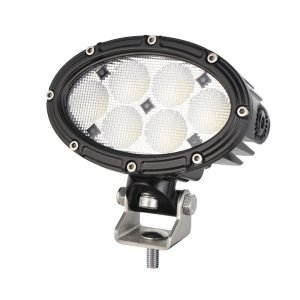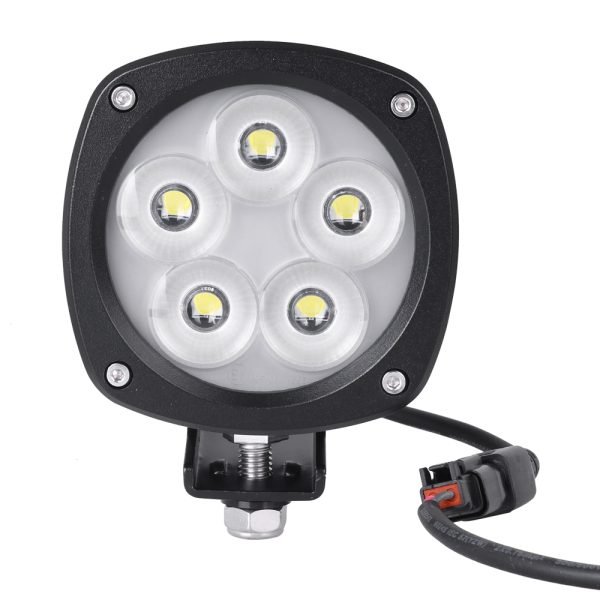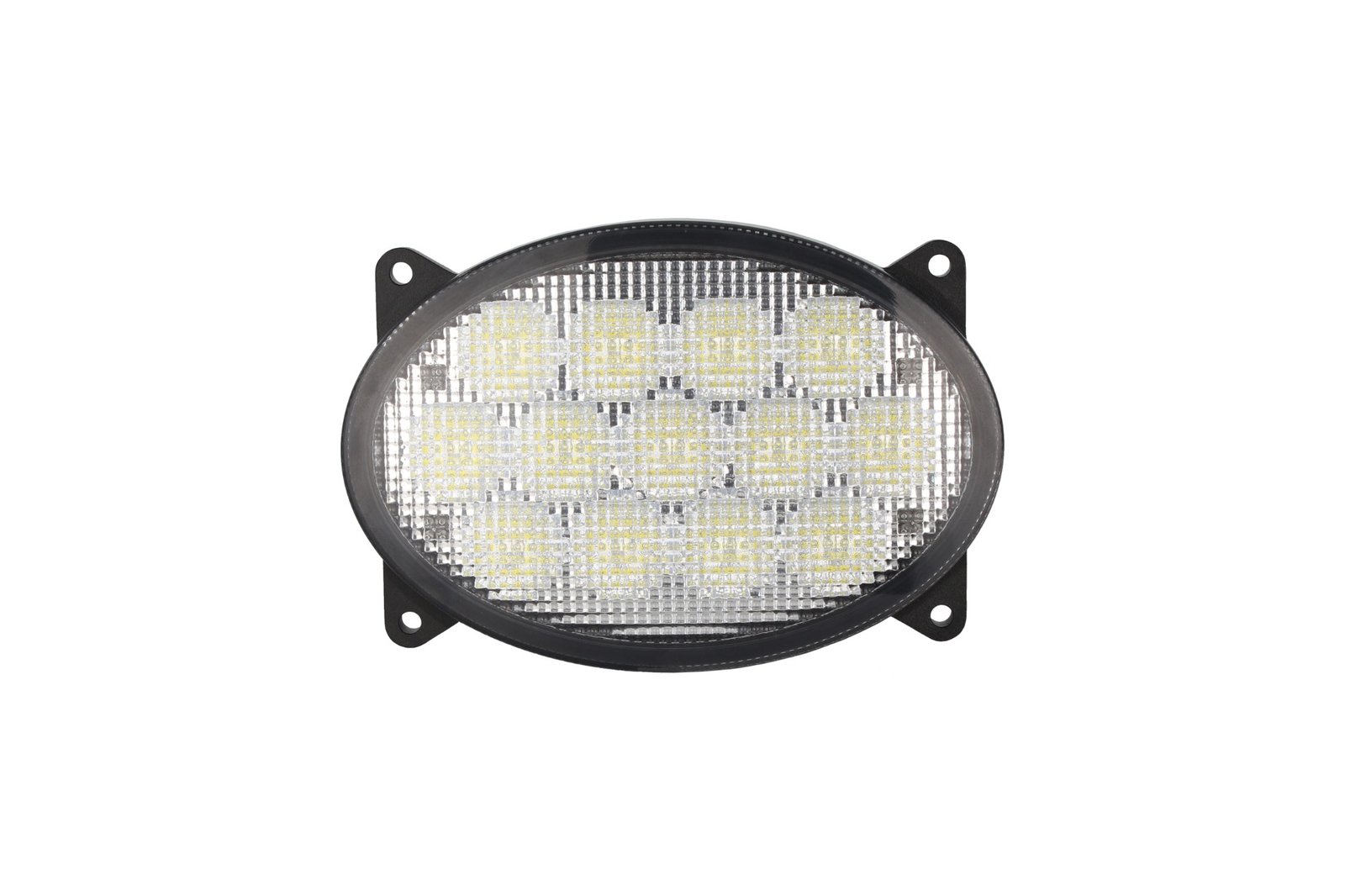导言
想象一下,您正在农田里工作,太阳开始下山,光线瞬息万变,而您的拖拉机还有许多重要的工作要完成。这时,安装良好的工作灯就变得至关重要。无论外面有多暗,工作灯都能确保您看清自己在做什么。您的工作将使您在白天和夜晚都能安全轻松地工作,就像在白天一样。
在本篇文章中,我们将告诉您为什么要添加 双视觉 LED 工作灯 在拖拉机上安装这种灯泡是个绝妙的主意,而且还可以自己安装。它们能发出明亮的光线,经久耐用,而且能耗仅为传统灯泡的一小部分。这样,它不仅能为您省钱,还能帮助拯救地球。

在本指南中,以下部分将引导您了解一切,帮助您决定最佳的 DualVisionLED 灯和安装过程中所需的工具,并提供安装的分步指南。此外,还将提供一些必要的安全措施。
请继续了解使用 DualVisionLED 工作灯提高农场夜间能见度的详细信息。
在拖拉机上安装工作灯的好处
在拖拉机上安装工作灯,首先要了解的是它们有一系列好处。这些灯使您可以在晚间工作,并提高您的安全性。
提高生产力
好的工作灯,如 DualVisionLED 的工作灯,可以让你在太阳下山后继续工作。这些灯不仅有助于提高能见度,还能帮助您确定工作方向。在需要从黎明工作到黄昏的繁忙季节,这可能是一个很好的资源。通过使用充足的照明,您可以在不牺牲速度或安全的情况下延长工作时间。
加强安全
正确的照明可以防止事故发生。它可以帮助人们在黑暗中轻松地看到其他可能的威胁,如石头、洞或其他任何形式的障碍物。适当的照明还能让农场里的其他人更容易看到拖拉机,从而避免与他们发生碰撞。这对于防止受伤和确保所有相关人员都能在困难的照明条件下工作至关重要。
减少眼睛疲劳
在光线不足的环境下工作会使眼睛疲劳,最终导致眼睛疲劳。您可能会意识到,这将影响您的健康和工作效率。清晰明亮的 LED 灯可以最大限度地减少这种疲劳,提高能见度,从而最大限度地提高您的注意力。

可靠性和耐用性
例如,如今市场上最耐用的产品、 LED 灯 DualVisionLED 专为农业所处的最恶劣环境和天气条件而设计,可大大减少更换和维护次数,当然还能提高性能--当您依赖设备为您完成大量工作时,这一点非常重要。
为您的拖拉机选择合适的双视觉 LED 灯
这不仅仅是为拖拉机找到最亮的灯的问题,选择最好的工作灯更为重要。考虑到您将要从事的工作,您必须确保您获得适合您工作条件的照明。以下是如何选择适合您的拖拉机和工作环境的最佳 DualVisionLED 灯。
了解灯具规格
要选择合适的灯具,第一步就是要了解其规格及其对使用的意义:
流明
这是对光源发出的可见光量的测量。流明越高,光线就越亮,这对于需要更多光线来处理大面积或黑暗区域的情况至关重要。
瓦特数
瓦数表示灯的耗电量。总而言之,LED 灯以比灯丝灯泡更低的瓦数发出相同强度的光,这意味着它们可以节约能源。
耐用性:
查看 IP(Injson Protection)等级。这将告诉您灯具的防尘防水程度。在露天农业环境中,要延长灯具的使用寿命,就必须提高 IP 防护等级。

灯光与任务相匹配
根据您的具体需求,您可能需要不同类型的灯:
泛光灯是一种能在大面积区域内产生非常高强度光线的照明设备。在一般野外工作中,它们适用于大多数地方的广泛可见性。
它可以在一个点上提供远距离的集中照明,适合需要精确可见度的工作。最后,对于使用拖拉机执行各种不同任务的用户来说,固定设置的混合动力车型可能是最佳选择。
考虑您的拖拉机型号
只有某些车灯适用于某些型号的拖拉机。必须
请注意,有些车灯的安装可能需要特殊的支架或适配器。在安装之前,请首先检查所购买的灯座是否与拖拉机的设计相匹配。一定要确保电气规格、电压和电流与拖拉机的规格、电压和电流一致,以避免过载,否则可能会非常危险。
审查模型
DualVisionLED 提供多种型号,可满足不同需求:
39W LED 拖拉机工作灯 是中型和大型拖拉机的最佳选择,可确保极高的照明度并提供出色的节能服务。对于较小的拖拉机或更特殊的任务,可以考虑瓦数较低的型号,这意味着它不会使拖拉机的电力系统过载,同时还能提供更好的能见度。

安装所需的工具和材料
在拖拉机上安装新的 DualVisionLED 工作灯之前,您必须收集工作所需的所有物品和工具。这将使工作变得更轻松、更快捷,因为您不必到很远的地方去拿东西。以下是您可能需要的物品清单:
必备工具:
螺丝刀 需要平头和尖头的螺丝刀,以帮助安装各种螺钉和配件。
扳手套件: 需要使用活动扳手来牢牢拧紧螺栓和螺母。
剪线钳/剥线钳 您需要用它来接线--基本上,它可以切断并剥去电线上的绝缘层。
钻头和钻头 根据车灯支架的设计,有些安装孔需要在拖拉机车身上钻孔。
万用表 这是检查电气连接性的重要工具,可确保在安装过程中不会发生电路短路。
安装材料:
安装支架和硬件: 通常情况下,在购买 DualVisionLED 灯套件时会随包装一起提供。不过,请确认一下。您需要能牢固安装灯具的支架和螺丝。
电气连接器和接线: 要想顺利地将车灯连接到拖拉机的电源系统上,具有足够接线长度的高质量电气连接器是必不可少的。为了耐用和安全起见,最好使用防风雨连接器。

电缆扎带和电工胶带: 使用电缆和电工胶带将接线紧密、安全、整齐地组装在一起。这样可以防止振动和电线与尖锐边缘接触的可能性,以免损坏电线绝缘层。
耐腐蚀紧固件: 由于操作是在室外进行的,因此最好使用耐腐蚀的螺钉和螺栓,以避免生锈问题,并确保安装能长期使用。
可选但有用:
电压表: 万用表可以完成这项工作,而专用电压表则可以快速读取电气系统的电压,确保在连接电灯之前电压兼容且安全。
硅酮密封胶: 硅酮密封胶贯穿整个安装边缘,有助于防止水进入,这在潮湿的天气里非常有用。
安全装备
戴上手套,保护双手免受锋利边缘和潜在电击的伤害。钻孔或切割时,保护眼睛免受飞溅碎片的伤害。
在拖拉机上安装 DualVisionLED 工作灯的分步指南
您拖拉机上的新工作灯不仅能提高夜间能见度,还能大大提高整体安全性和效率。请按照本指南确保正确安装 DualVisionLED 车灯。

步骤 1:规划和准备
考虑好要安装的灯光类型后,确定灯光在拖拉机上的安装位置。建议安装在前格栅上方、朝前或朝后的车顶上,以及两侧以照亮更广阔的区域。确定车灯位置后,用记号笔和卷尺标出准确位置。这样可以使间距和对齐度相等。
步骤 2:安装支架
做好标记后,开始钻安装支架的孔。钻孔时一定要戴上安全眼镜,以保护眼睛不受飞溅碎片的伤害。确保用灯具套件中的螺钉和螺栓将安装支架牢固地固定在灯杆上。确保使用扳手将其牢牢拧紧。
步骤 3:给灯接线
每盏灯的接线都要回到拖拉机上的电源处。因此,所有电线都应该用扎线带绑好,远离移动部件或热源。借助电连接器,照明线路将连接到拖拉机的电气系统上。在这里,万用表可以帮助测试正确的极性,以免发生短路。
步骤 4:进行电气连接
在将所有设备安装就位之前,有必要连接拖拉机并检查每个照明灯是否处于工作状态。整个过程中要注意不要留下任何接线,以避免重做。确保接线后使用扎线带和电工胶带固定。这样可以避免电线被拖拉机的运动部件挂住或卡住。
步骤 5:最后完成安装
沿着所有支架的边缘和钻孔的位置涂抹一圈硅酮密封胶,以防止水进入墙内。在潮湿的环境中更应如此。再次检查连接和支架。牢牢固定所有部件。在这里多花几分钟进行检查,总比以后出了问题再检查要划算得多。
步骤 6:安全检查和清理
将拖拉机上的任何工具、垃圾或安装材料移出该区域。再次启动拖拉机,打开车灯,看看是否有任何与完美状态不符的地方。露出任何松动的电线或修复任何松动的连接部件。
安装安全提示和最佳做法
安全提示
断开电池连接:
在开始任何安装工作之前,一定要断开拖拉机电池的连接。这有助于避免意外触电,并减少在系统工作时发生短路的机会。
穿戴适当的安全装备:
戴上手套,以免被锋利的边缘割伤。在钻孔或切割过程中,戴上防护眼镜以保护眼睛免受碎片伤害。
检查所有电气连接:
使用万用表检查所有连接,确保电压和极性正确。只有在连接足够紧密、可以短路或断开的情况下,才能继续安装。
安全保护布线:
在所有安装情况下,所有线路的走向都要远离移动部件或热源。用电缆扎带固定,并用电工胶带或导管覆盖,以防止磨损和暴露。

使用优质材料:
在安装的各个环节都要选择优质耐用的材料,包括耐腐蚀的紧固件和防风雨的连接器,使灯具及其安装能够长期使用。
定期维护检查:
安装后要不时检查灯具和支架,使其保持就位,螺栓要重新拧紧,并更换任何过期的线路或有使用寿命的连接器,以避免故障。
应急计划:
我们必须保留紧急电话号码和急救箱,以防发生意外。如果你知道该怎么做,大多数可能发生在你身上的事情都能大大降低所有问题的风险和后果。
结论
总之,在拖拉机上安装 DualVisionLED 工作灯可以大大促进农田作业,因为它可以延长夜间工作时间并提高安全性。这些照明灯使长时间工作成为可能,确保这段时间的安全,并在照明不足的情况下提高生产率。此外,LED 技术的最大亮度和能源效率使您的工作空间熠熠生辉,而其更持久的设计则降低了能源成本和更换需求。
行动呼吁
现在就为您的拖拉机升级 DualVisionLED 工作灯,充分利用这些优势。请访问 DualVisionLED 的产品页面 了解这一创新的解决方案,查看全系列优质照明产品。让未来的农业变得更明亮、更安全、更高效。
